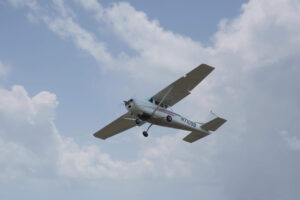As a pilot, understanding the regulations and maintenance requirements that keep your aircraft airworthy is crucial. Regular inspection and maintenance of various components, systems, and instruments are vital to ensuring safety. The AV1ATE acronym provides a handy checklist to confirm that your aircraft has received all necessary maintenance and checks required for flight. Whether you are a seasoned pilot or just starting, following the AV1ATE checklist helps maintain your aircraft’s readiness and compliance with safety standards.
Understanding AV1ATE
AV1ATE stands for:
- A – Annual Inspection (required every 12 calendar months)
- V – VOR Check (required every 30 calendar days for IFR flight)
- 1 – 100-Hour Inspection
- A – Altimeter (required every 24 calendar months) + Airworthiness Directives (ADs)
- T – Transponder (required every 24 calendar months)
- E – ELT Inspection (required every 12 calendar months)
- S – Static System Inspection (required every 24 calendar months)
Let’s explore each item in detail.
A – Annual Inspection
Annual Inspection is a thorough examination of the aircraft, encompassing its structure, systems, and components. This inspection is required every 12 calendar months and must be performed by a certified mechanic with inspection authorization.
- Scope of Inspection: The annual inspection involves checking the aircraft’s airframe, engine, avionics, and all critical systems. It ensures that the aircraft complies with all safety standards and is free from defects that could compromise flight safety.
- Logbook Entry: Once the inspection is complete and any necessary repairs are made, the mechanic will sign off in the aircraft’s maintenance logbook, certifying that the aircraft is airworthy.
V – VOR Check
The VOR (VHF Omni-Directional Range) Check ensures that the aircraft’s VOR navigation equipment is accurate and reliable. This check is required every 30 calendar days for IFR (Instrument Flight Rules) flights.
- Purpose: VORs are crucial for navigation, providing pilots with bearing information relative to VOR stations. Ensuring their accuracy is vital for safe navigation.
- Methods of Check:
- VOT Signal: Use a VOR test signal located at some airports.
- VOR Checkpoint: Use a designated point on the ground at an airport.
- Dual VOR Check: Cross-check indications of two VOR receivers on the aircraft.
- In-flight Check: Compare VOR readings while airborne.
1 – 100-Hour Inspection
The 100-Hour Inspection is necessary for aircraft used for hire or flight instruction. This inspection must be performed every 100 flight hours.
- Inspection Authority: Unlike the annual inspection, a 100-hour inspection can be performed by any certified mechanic without special inspection authorization.
- Frequency and Scope: Conducted more frequently, this inspection is less comprehensive than an annual inspection but still ensures that all critical components are functioning correctly and safely.
A – Altimeter + Airworthiness Directives (ADs)
Altimeter Inspection: The altimeter, a crucial instrument for altitude measurement, must be inspected every 24 calendar months.
- Inspection Process: A certified mechanic checks the altimeter against a known altitude source to ensure its accuracy. This is vital for maintaining accurate altitude readings and safe flight operations.
Airworthiness Directives (ADs): These are mandatory notifications issued by the FAA to address unsafe conditions in aircraft, engines, propellers, or appliances.
- Purpose of ADs: They ensure that any potential safety issues identified by the FAA are corrected promptly.
- Compliance: ADs must be complied with to maintain the aircraft’s airworthiness certificate. Failure to comply can result in grounding of the aircraft.
T – Transponder
The Transponder transmits critical data, including the aircraft’s position and altitude, to Air Traffic Control (ATC).
- Inspection Frequency: Every 24 calendar months.
- Inspection Process: A certified mechanic tests the transponder’s functionality and accuracy. This ensures that it is transmitting correct information to ATC, which is essential for maintaining safe separation from other aircraft.
E – Emergency Locator Transmitter (ELT)
The ELT is designed to transmit a distress signal in the event of an accident, aiding search and rescue operations.
- Inspection Frequency: Every 12 calendar months.
- Battery Requirements: ELT batteries must be replaced or recharged if the transmitter has been used for more than one hour or if the battery life has reached 50% of its useful life.
- Inspection Process: Ensures the ELT is properly installed and operational, verifying that it can effectively transmit a distress signal if needed.
S – Static System Inspection
The Static System provides air pressure readings used by the altimeter and airspeed indicators, which are crucial for safe flight.
- Inspection Frequency: Every 24 calendar months.
- Inspection Process: A certified mechanic checks the static system for leaks and accuracy to ensure that the instruments relying on it (like the altimeter and airspeed indicator) provide correct readings.
Conclusion
Prioritizing safety and compliance with maintenance regulations is essential for every pilot. The AV1ATE checklist serves as a reliable tool to ensure your aircraft meets all necessary inspection and maintenance requirements, promoting safe and secure flight operations. Regularly following this checklist helps you become a better, safer pilot, contributing to the overall safety of aviation.
FAQs
Q1: How often should I review the AV1ATE checklist? Regularly review the AV1ATE checklist before each flight and ensure all inspections are up to date.
Q2: What happens if I miss an inspection deadline? If an inspection is overdue, the aircraft must not be flown until the required maintenance is completed.
Q3: Can I perform any of these inspections myself? Most of these inspections require a certified mechanic. However, pilots can perform some checks, like the VOR check, under certain conditions.




